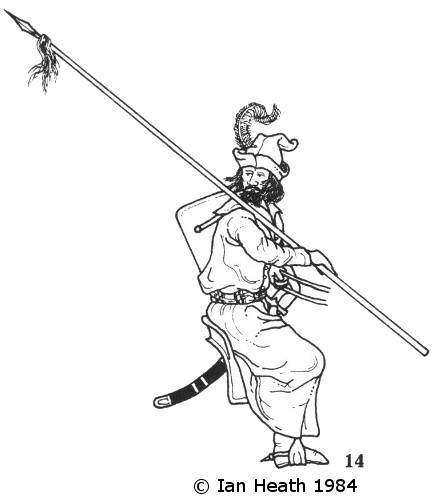
Try Amazon Audible Plus
BALKAN CAVALRYMAN, 15th CENTURY
 An extract from Armies of the Middle Ages, Volume 2
An extract from Armies of the Middle Ages, Volume 2by Ian Heath

 An extract from Armies of the Middle Ages, Volume 2
An extract from Armies of the Middle Ages, Volume 214. BALKAN CAVALRYMAN, 15th CENTURY
Dozens of late-15th century sources depict bands of allegedly Turkish horsemen such as this, wearing long tunics, coats with large collars and, chiefly, brimmed caps, or less frequently turbans. Many of the caps may be poor renditions of the Janissary ak börk, but as will be seen later on, nearly all of the Balkan peoples (particularly the Albanians, Wallachians and Hungarians) wore similar brimmed caps, so it is quite likely that figures such as the one depicted here (from William Caoursin’s ‘Obsidionis Rhodiae Descriptio’, printed in Ulm in 1496) are based on scanty information or eye-witness reports that failed to adequately differentiate between Ottomans, their assorted Balkan auxiliaries, and their Christian enemies. (Compare the similarity of dress between this figure and figures 10, 68 and 78, for instance.) This hypothesis is reinforced by the fact that the vast majority of such figures are lancers, when Brocquière specifically reports that ‘Turkish lances are worth nothing; their archers are the best troops they have’. Also, very few wear turbans, so are therefore - like the Janissaries - of non-Turkish origin.